The comments in last week’s column — from a fellow veteran of the University of South Florida’s early-mid-1970s marathon movie screenings — brought my own memories of those days back with no little nostalgia for a time when I was young enough, resilient enough and possibly dumb enough to undertake such a thing as 16 movies in the space between Friday evening and Sunday afternoon. To that end, I determined to recall just what two tenacious friends and I saw over those few days 35 and a half years ago.
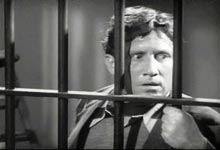
This turned out not to be quite the simple matter I originally envisioned—despite the fact that I am reputed to have a pretty good memory. At first, I was only able to conjure up eight of the titles (a feat that in itself impressed Justin Souther, but merely annoyed me). Leaving a piece of paper with those titles on the desk, I added to it as other titles occurred to me over the course of the evening. By the end I’d arrived at 14 of the 16. A few e-mail exchanges with my friend Greg — the other attendee from 1973 with whom I’m still in contact — provided the missing two. I had recalled that we’d deliberately passed on seeing George Cukor’s Greta Garbo vehicle Camille (1937), but, according to Greg, we also didn’t see Frank Lloyd’s Mutiny on the Bounty (1935). I’ll take his word for it. I’d seen it before and have never had the “proper appreciation” for it, so it’s likely he’s right. I concede then that we only saw 14 of the films shown.
The final line-up, however, consisted of the following:
Captains Courageous (1937)
Anna Karenina (1935)
Fury (1936)
A Day at the Races (1937)
The Thin Man (1934)
The Wizard of Oz (1939)
The Good Earth (1937)
Tarzan the Ape Man (1932)
The Champ (1931)
A Night at the Opera (1935)
Camille (1937)
David Copperfield (1935)
Ninotchka (1939)
The Citadel (1938)
Goodbye, Mr. Chips (1939)
Mutiny on the Bounty (1935)
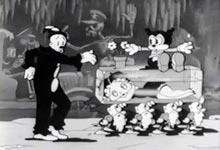
I’m reasonably sure that the line-up is in order through Wizard of Oz. I know the marathon opened with Captains Courageous and that the last two films of that evening were A Day at the Races and The Thin Man. And Saturday started at noon with Oz. After that, the order becomes a little hazy. There were also short films (mostly, Laurel and Hardy and Robert Benchley) and Betty Boop cartoons (these Paramount offerings being the only departure from the MGM theme). In fact, this is where I first encountered Betty Boop, and it wasn’t long before my friends and I found you could buy 16mm TV prints of these. I doubt I’m exaggerating when I say that we probably ran the seven minute Betty Boop “Snow-White” (1933) 20 times one night on a borrowed projector in an Episcopal church parish hall, dissecting the film in terms of Freudian sexual imagery. Disney was never like this — and he didn’t have Cab Calloway singing “St. James Infirmary” either. (The aforementioned Greg even learned to play the bass part of the background score — consisting of instrumental versions of two Bing Crosby hits, “Please” and “Here Lies Love” — on the tuba, and was known to do so when watching the cartoon.)
Looked at from the perspective of 2008, I suppose that’s a pretty tepid-looking list. Most of these titles (maybe all of them) are available on DVD now, and all of them show up (sometimes with alarming frequency) on Turner Classic Movies. In 1973, it was simply amazing—and I say this as one who views the MGM output as the least interesting of all the “golden age” studios. (Their output tends to be a little too whitebread for my taste.) But, hey, VCRs were four years away and the idea of TV stations that would run movies without commercials or, worse, carving on them to make room for even more commercials was something we’d never even thought of.
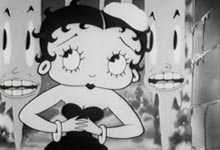
As far as the list was concerned, there were only four titles I had never seen — Captains Courageous, Anna Karenina, Fury and The Good Earth — but that didn’t bother me then and it wouldn’t bother me now. I have no problem with seeing a film multiple times, and anyway this was seeing them with an audience on a movie screen and that’s a very different proposition.
I’m not sure what a college audience is like today and I’m certainly mindful of the fact that 1973 was right in the heart of the nostaglia boom when it was cool to like “old movies” (a constantly shifting term obviously). I will say, however, that college audiences then were a mix of the best and the worst thing that could happen to a film—with, so far as I’m concerned, a distinct leaning toward the best, simply in their lack of passiveness. Yes, that occasionally evidenced itself in laughter at inappropriate times. And in this instance, there was a singularly memorable moment when the wicked step-mother in “Snow-White” transformed herself into the witch and a young lady cried, “Far f**king out!” Whether that’s detrimental I’m not sure, but the very fact that the audience was so into the movies strikes me as a plus.
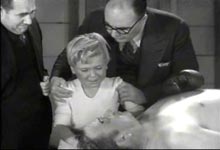
In at least one case—King Vidor’s The Champ—the audience probably “made” the film a treasured moviegoing experience. This was the oldest film in the set, being from 1931—a year in which movies were still doing a good bit of flailing around as concerns coming to terms with sound. While The Champ is demonstrably a good film, it definitely creaks at the joints. The lack of a musical track—apart from the opening credits and Brahms’ “Lullaby” at the very end—is very noticeable and the camerawork can be ragged. Add into the mix the fact that star Wallace Beery tends to be a very large bag of hammy mannerisms and a shamelessly sentimental story, and you have what could have been a recipe for disaster.
At first, it seemed like this was going to be the case. There was a sense that the audience by and large was taking a superior stance to the whole thing, luxuriating in that casual cynicism that’s the exclusive property of the young. But somewhere along the way, the movie suckered them in. To this day, I have never seen an audience go as wild as this one did when Beery’s Champ won the climactic boxing match, nor have I witnessed so many people reduced to tears as they were when the Champ subsequently expires, followed by that most excellent of child actors Jackie Cooper inconsolably crying, “I want the Champ,” before being reunited with his estranged mother, telling her, “Mother, the Champ is dead.” It was the perfect match of movie and audience—and a testament to the emotional power a movie—even one that can be called “corny”—is capable of attaining.

For me, the weekend was little short of magical. I was blown away by the masterful filmmaking of Clarence Brown’s Anna Karenina from our—and Fredric March’s—first glimpse of Anna through the steam from a train to her brilliantly edited suicide. (I was also annoyed no end by the pointless wrap-up scene where March talks about how they all should have been kinder to the woman.) Fritz Lang’s Fury amazed me then in its raw (and very un-MGM) power and it still does. It marked the first time I actually liked George Cukor’s David Copperfield, a movie that left me cold on TV. The very fact of seeing an enthusiastic crowd rush the theater and force their way into the sold-out A Day at the Races was such a validation of my own tastes (important when you’re 18) that I didn’t mind the inconvenience or the very long wait for things to get sorted out.
Oh, sure, there were downsides. The Good Earth bored me stiff and it would be 20 years before I was able to appreciate it. Seeing The Wizard of Oz on the big screen pretty much killed my youthful enthusiasm for that unassailable classic. The plastic-looking sets and the all-too-obvious fact that if our frankly overly exuberant leads skipped ten more feet down the Yellow Brick Road they’d run smack into the yellow brick backdrop really damaged it for me. The previously incomprehensible criticisms of the film for having all the charm and whimsy of a sodden fruitcake and the dismissal of the leads as “overstuffed vaudevillians” suddenly made sense. Sure, “Over the Rainbow” still worked, the flying monkeys were still scary and the Witch’s castle was still cool, but the overall impact wasn’t so great.
Tarzan the Ape Man suffered, too. The cheese factor became very obvious when it was made larger than a TV screen. Shots of C. Aubrey Smith and Maureen O’Sullivan standing in front of an out-of-scale rear projection of a native tribe (probably outtakes from Trader Horn (1931)) were frankly pathetic. However, Tarzan had—and has—the advantage of working as camp. It takes a more sober-minded viewer than I to fully resist the famous “Tarzan—Jane” (not “Me Tarzan—You Jane”) business, or even Weismuller’s fight with the guy in the ape suit during the climax. Cheese can have its appeal, depending on the cheese.
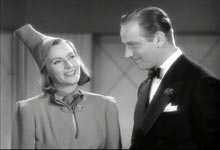
The overall feeling, however, was elation—the sheer joy of seeing all these films in such a concentrated dose with packed houses of like-minded viewers. That sense of bonding as an audience—fused together in the mutual love of movies for their own sake—was a unique experience that I doubt could be duplicated.
The question arises as to whether or not I’d undertake such a thing today. The idea certainly appeals to me, but at 54 instead of 18, I’m aware that my stamina just ain’t what it was then. Could I even consider sitting in a theater seat—without a bathroom break out of fear of losing that seat—from 7 p.m. till 3:30 a.m.? I doubt it. If nothing else, it would probably take a solid half hour to work myself into an upright, barely mobile state after the fact. Some things are best left to youth and hallowed memory.
That doesn’t mean I haven’t toyed with the idea. In fact, Justin Souther and I planned out a dusk-to-dawn horror show for Halloween this year and were all set to try to talk Neal Reed of the Fine Arts Theatre into it. We then decided that Neal was more apt to go for a less ambitious triple feature. In the end, we wimped out on the idea—partly out of fear that no one would come, making the whole enterprise frankly depressing. Still, it might have been fun, and horror or not, we haven’t entirely given up on variations of the idea.
The concept of presenting some kind of large (or even medium) scale retrospective has an undeniable appeal—and undeniable pitfalls, some of which are dictated by the expense. But I’ll tell you this—if we could be assured of an audience, we’d do it. Maybe it wouldn’t be 16 movies from the 1930s in three days, but we’d definitely do it. And we’re definitely open to input on the topic.




Before you comment
The comments section is here to provide a platform for civil dialogue on the issues we face together as a local community. Xpress is committed to offering this platform for all voices, but when the tone of the discussion gets nasty or strays off topic, we believe many people choose not to participate. Xpress editors are determined to moderate comments to ensure a constructive interchange is maintained. All comments judged not to be in keeping with the spirit of civil discourse will be removed and repeat violators will be banned. See here for our terms of service. Thank you for being part of this effort to promote respectful discussion.